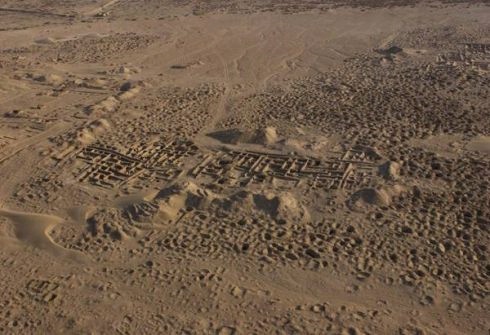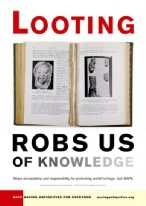Cultural Heritage and Technology
Preserving cultural heritage in times of conflict
There are many professionals who on a daily basis struggle to safeguard all that the human mind produces, tangible as well as intangible products. Most of the time conservators try to protect our heritage against the natural process of deterioration. They fight the acidity of paper, the copper corrosion of miniatures, the chemical burning of leather, the shrinkage of overheated parchment, the disintegration of red silk or the yellowed varnish of paintings. At most, they can only stop these destructive processes temporarily as, in the end, nature will overcome all of our tangible heritage: all is lost that is delayed.
Next to the inevitable natural causes of decay, natural hazards such as earthquakes, floods, landslides, wildfires, tsunamis and tropical cyclones exact a heavy toll in terms of direct loss and irreparable damage to our cultural legacy. The consequences of the tsunami in Asia in 2004, the Katrina hurricane during the 2005 Atlantic season and the earthquake in northern Pakistan just before the severe winter of 2005/2006, were first of all horrifying because of the huge loss of human lives, but at the same time left entire regions devoid of libraries, archives and museums.
Manmade disasters can even outdo natural disasters in the detrimental effects on our collective memory of the past. Theft, war, civil disorder, terrorism, neglect and vandalism are human factors in the accidental or wilful destruction of our heritage (Teijgeler, 2001). Of these threats, armed conflict remains particularly intractable and disturbing. Regrettably, of late we have experienced more than once how shocking the effects of a violent struggle can be on the heritage of countries such as the former Yugoslavia, Afghanistan and Iraq. Statues are blown up because they are considered an insult to the 'only and right religion', archaeological sites are occupied by foreign troops and destroyed in the process, and archives are deliberately obliterated as part of an ethnic cleansing policy. Undoubtedly, the final decade of the 20th century was marked by destruction of heritage on a symbolic scale that has been unrivalled for the past several centuries.
(...)
read more ...
Aerial photographs of looted areas in Southern Iraq - Carabinieri T.P.C. Italia
The Italian carabinieri have a specialist unit which deals solely with safeguarding the country’s cultural heritage.
read more ..
Compiling summary inventories in crisis-hit regions
Their last large-scale deployment was in Iraq. Following the looting and destruction of the national museum in Baghdad as well as thefts from archaeological digs, an inventory of the most endangered sites had to be drawn up as a matter of utmost urgency. With the help of local experts, the work began in July 2003 and was completed in January 2005, resulting in a database of approximately 321 archaeological digs. Given the problem of illegal exports, at-risk archaeological objects had to be recorded and documented, and local staff had to be trained.
(Source:Zottin, Ugo: Inventario PBC dei Carabinieri, in: Forum 6/ 2005, pp. 69 - 74)
read more ...



